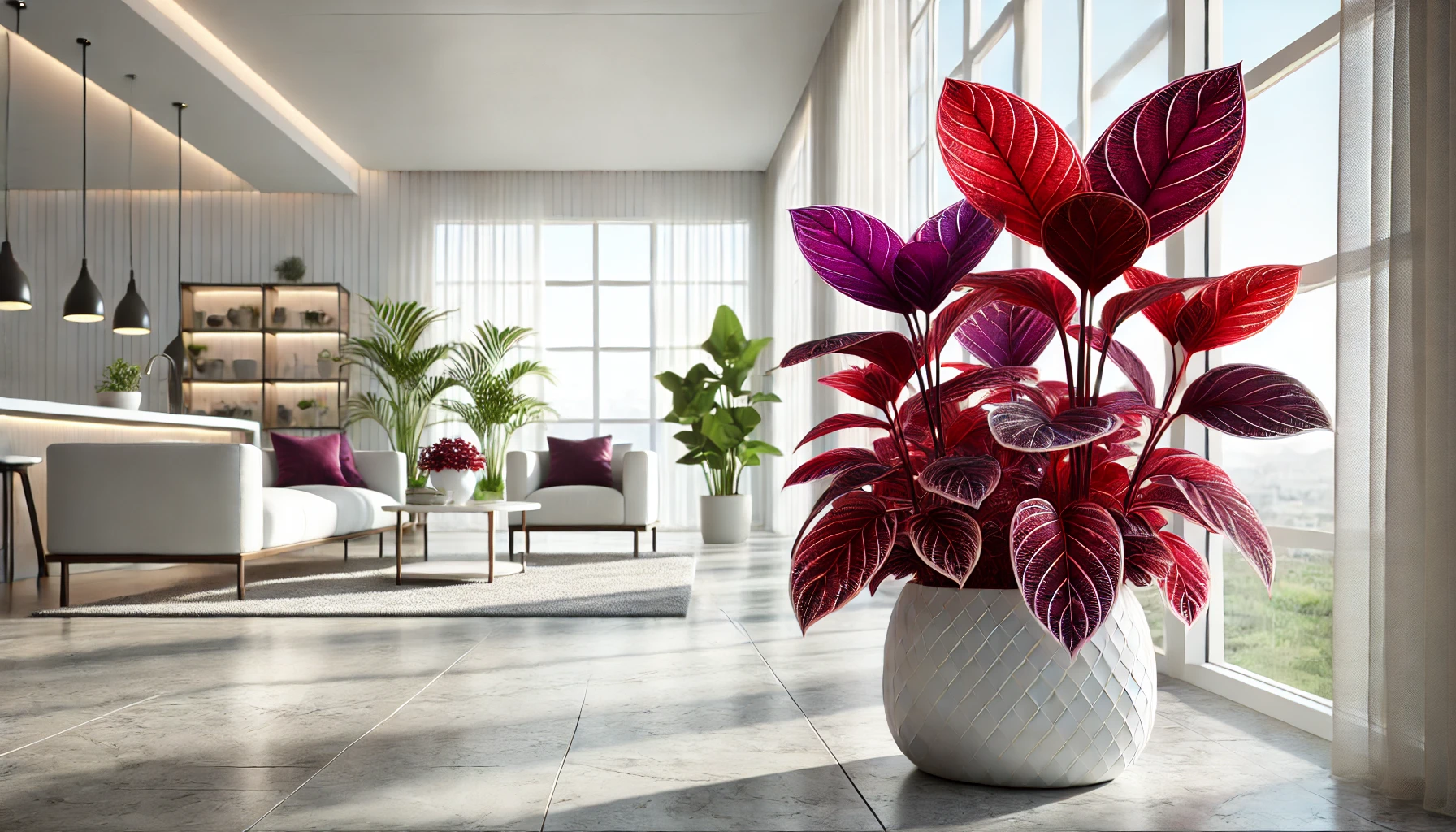
The Bloodleaf plant, formally known as Iresine herbstii, is a striking houseplant celebrated for its vibrant red and purple foliage. Native to tropical regions of South America, this plant can grow up to 2 to 3 feet tall and spread about 1 to 2 feet wide. Its colorful leaves make it an excellent choice for adding a splash of color to indoor spaces.
History and Ideal Growing Conditions
The Bloodleaf plant has a rich history, often found in gardens and homes due to its ornamental appeal. Originally discovered in Brazil, it quickly gained popularity worldwide for its ability to thrive in both indoor and outdoor environments. Ideal growing conditions for the Bloodleaf include warm temperatures, high humidity, and bright, indirect light. It prefers a well-draining soil mix and regular watering to maintain its lush appearance.
Information about Toxicity and Pets
While the Bloodleaf plant is admired for its beauty, it’s important to note that it can be toxic to pets. If ingested, it may cause mild gastrointestinal discomfort in cats and dogs. As a precaution, it’s best to place the plant out of reach of curious pets to avoid any potential health issues.
Best Practices for Caring for Your Bloodleaf
Caring for a Bloodleaf plant is relatively straightforward, making it a great option for both novice and experienced plant enthusiasts. To ensure your Bloodleaf thrives, it’s essential to pay attention to its specific needs, including watering, humidity, soil, light, and temperature.
Watering and Humidity
The Bloodleaf prefers consistently moist soil but be careful not to overwater it, as this can lead to root rot. Water your Bloodleaf when the top inch of soil feels dry to the touch. Additionally, this plant thrives in high humidity environments. To increase humidity, you can mist the plant regularly or place it near a humidifier. Grouping it with other plants can also help create a more humid microenvironment.
Soil, Light, and Temperature
When it comes to soil, a well-draining potting mix is essential for the Bloodleaf. A mix containing peat moss, perlite, and compost works well. In terms of lighting, the Bloodleaf does best in bright, indirect light. Direct sunlight can scorch its delicate leaves, so it’s best to place it near a window with filtered light or in a spot that receives dappled sunlight.
Temperature-wise, the Bloodleaf thrives in warm conditions, ideally between 65°F to 75°F (18°C to 24°C). Avoid placing the plant in drafty areas or near cold windows during winter months, as it is sensitive to sudden temperature changes.
Common Problems and Remedies
The Bloodleaf plant is generally hardy, but it can encounter a few common problems. Yellowing leaves often indicate overwatering, while crispy edges can be a sign of too little humidity. Pests like spider mites and aphids can occasionally be an issue. To combat these, wipe the leaves with a damp cloth and use insecticidal soap if necessary.
Propagation and Benefits
Propagating the Bloodleaf is a rewarding process. The easiest method is through stem cuttings. Simply cut a healthy stem just below a node, remove the lower leaves, and place it in water or directly into moist soil. Within a few weeks, roots should develop, and you can transplant the new plant into its own pot.
In addition to its striking appearance, the Bloodleaf plant is known for its air-purifying qualities. It helps remove toxins from the air, making it a beneficial addition to any indoor space.
Final Thoughts
The Bloodleaf plant is a vibrant and low-maintenance addition to any plant collection. With its stunning foliage and straightforward care requirements, it brings a touch of the tropics into your home. By providing the right conditions and a little bit of attention, your Bloodleaf will thrive and brighten up your living space.



